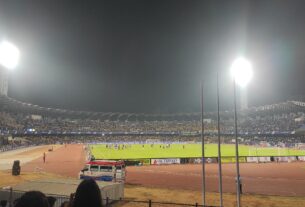Non-suicidal self-injury is becoming an increasingly common behaviour among school-aged youth. Psychologists say they receive several cases of self-harm by school kids every day and that the numbers across the country is even more alarming.
By Riya Sharma
Before Tejaswini enters a room, her arrival is announced by the jingling sound of her silver bangles.
The most inherent part of Tejaswini’s everyday apparel is donning a chunk-load of bangles on her arms, no matter the type of clothes she has on.
While bangles are worn as accessories by most women, for Tejasvini it has essentially been a way to cover the cut marks on her forearms and wrists, to cover scars that do not look like accidental cuts.
Self-injurious behaviour or deliberate self-harm (DSH) in adolescents and young adults is an area of growing concern, according to psychologists. The Indian Journal of Psychiatry says that reports from clinics and emergency rooms point to an increase in such incidences. Dr. Geetha Appachu, a child psychologist said, “Most of the kids presenting with repetitive behaviours of self-harm do not have suicidal intent.”
Data from the Indian Journal of Psychiatry says that a study carried out among 1571 schools and college students in India found the prevalence of NSSI to be 33.8%.
“Most kids, who cut themselves, do not intend to attempt suicide. I cut myself to feel better; I did not wish to die.” said Tejasvini, who first cut herself when she was 11 years old and now hides her scars behind jingling silver bangles.
“Some clients who display repetitive self-harming behaviour also have suicidal tendencies, so we cannot rule out the possibility of self-harm leading to suicide, keep this bit.” added Dr. Appachu.
Since many of the individuals presenting with acts of self-harm do not have suicidal intent, it has prompted the Diagnostic and Statistical Manual of Mental Disorders, Fifth Edition to propose a category of Nonsuicidal Self-Injury (NSSI) as a “Condition for Further Study” to encourage further research in this area.
“The individual who engages in NSSI behaviour, either does it to get relief from negative feelings, to resolve interpersonal difficulties, or to induce a positive feeling,” as per the Indian Journal of Psychiatry.

Rishika Deswal, a Teach for India fellow is actively engaged in helping out the students in her classrooms who habitually cut themselves.
“It is fitting to take an expert on-board in order to find a solid solution for these kids, but initially, starting conversations amongst small groups of kids going through the same thing helps,” Deswal said.
“Listening”, Deswal said, “is the key to getting the kids to open up.”
“Just try to listen to the kids, and not advise them initially. Once they recognize it as a safe space, they want to talk and listen to you,” she added.
Riddhi, a postgraduate student who used to cut herself back when she was in school, said that admitting or talking about self-harm is the first step towards recovery but also the hardest, especially for children.
Dr. Appachu said that self-harm is a very individual specific behaviour.
“Self-harm is not something one learns from experience. It may be possible that one fellow classmate could tell the other about how it feels or helps, and the kid may pick it up, but it depends on individuals,” she added.
Riddhi echoed Dr. Appachu’s point by confirming that most children get influenced by looking at someone cutting themselves, just the way she was.
Dr. Appachu added, “Almost 9 out of ten times, it is the kid who discovers and indulges in self-harming behaviour and starts doing it regularly as a distraction from emotional stress.”
Tejasvini said that she has been familiar with depression since she was eleven years old.
“I couldn’t talk to my mother. I still feel she would not have understood. All a child needs at this point is someone who understands, so that’s the first step at recovery,” she said.
“Sadly, if we wait for the government to do something for these kids that come from economically poor backgrounds, then we are not doing our bit as a society,” she said.
“Irrespective of our professions, if we can reach out to one of these million kids who are suffering, it makes a lot of difference,” she added.



